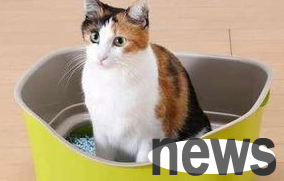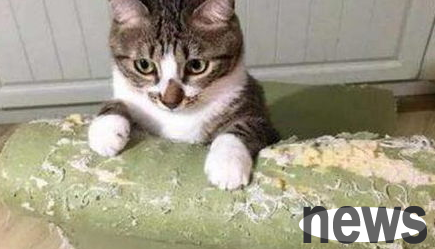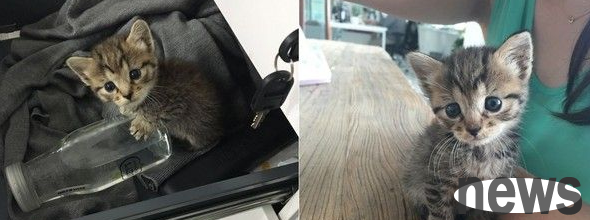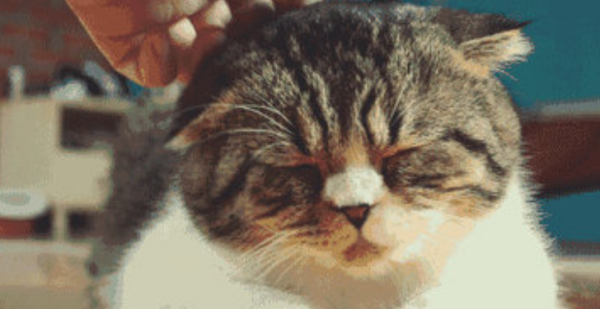How to train cats not to urinate or defecate anywhere, please pay attention to the cat owner!
How to train cats not to urinate or defecate anywhere, please pay attention to the cat owner! Compared to training dog excretion, it is much more convenient to train cats not to urinate or defecate anywhere. Just provide a clean cat litter box for the cat, clean it regularly, and train it, and you can get a cat that will not urinate or defecate anywhere. Of course, there will be some special situations in this, which will cause the cat to suddenly stop going to the litter box. Why is this? Let’s answer them one by one below.

1. Training cats to use cat litter
to prepare a sand pot for pet cats. You can make it yourself or buy a special pet sand pot on the market, and then place it in a corner of the family. You can catch the cat in the special toilet prepared for it and gently pat it on its head and butt. It is the toilet and then poop inside. Of course, it is impossible for a cat to understand the first time, and it will not be so obedient to urinate and defecate in the sand pot. In the early stage of training, breeders should pay close attention to the cat's urination and defecation behavior, and when they find that the cat is urinating and defecating. It is convenient to catch the cat and go to the fixed sandbath. When the cat is convenient, the owner should not disturb it, but should watch and wait quietly in the distance. Training pet cats to urinate and defecate in a fixed sandbath cannot be done once or twice. During the training process, the breeder should have a perseverance and be patient with every training. I believe that after a period of time, cats will develop the habit of urinating and defecating in fixed sand basins.
2. Training cats to not urinate or defecate anywhere
Although cats love to clean and can easily let them defecate in the potty through training, the potty must be cleaned frequently, and the pads need to be replaced frequently. Moreover, the smell of cats' feces is particularly unpleasant. Therefore, among urban residents, training cats to urinate and defecate on the toilet can achieve a killing effect in one go. Before training, place a plastic board or wooden board under the toilet seat, and lay an appropriate amount of sand, furnace ash, sawdust and other padding on the plastic board or wooden board. When you find that a cat is going to defecate, take it to the toilet, and it will defecate soon. After the cat develops the habit of urinating on plastic boards or wooden boards by itself, gradually reduces the amount of bedding. The cat will gradually develop the habit of standing on the toilet seat and urinating on the toilet seat. At this time, the plastic boards or wooden boards can be taken away.
During training, it is best for people not to use a toilet; the padding should be replaced frequently, usually once a day; if a cat is unwilling to go to the toilet cabinet to urinate and defecate again because it falls into the toilet, then he can only start training from scratch.
Cats use toilets

3. Causes of cats urinating and defecating anywhere
1. Causes of diseases: Some diseases can cause frequent urination and pooping, which may cause cats to have such problem behaviors. These diseases include colitis, enteritis, diabetes, hyperthyroidism, kidney or liver diseases, and cat lower urinary tract syndrome (FLUTD). Some diseases may cause pain in cats when peeing or pooping, or have difficulty entering and exiting the litter box, such as arthritis, cat lower urinary tract syndrome (FLUTD), anal cysts, blindness, etc. Treating these diseases can improve cats' problem behavior. In addition, using a flatter cat litter box, placing the litter box in the place where the cat stays most often, increasing the number of litter box may be helpful.
2. Cause of stress: At any age, stress may cause them to have such problematic behavior. Sources of stress include moving, sudden changes in regular life, changes in family members, etc. Reducing the source of these stress or reducing the impact of such changes on the cat is good for the cat or even yourself. For example, when you have to move, it is best to keep the cat in a quieter place at home on the day of packing and moving. After moving to the new home, you should also let the cat stay in a quiet room, such as the bedroom, put its food, water, litter box, and the bed or mat that it likes to sleep with, spend more time in the room, feed it, clean the litter box, and then gradually familiarize it with other parts of the new home.
3. Likes and dislikes about cat litter: Cats of any age may not use cat litter box because of their disgust with cat litter. For example, some cat litters have a scent, or some cat litters have a smell of disinfectants and a potion, which cats may not like. So you can try a few more cat litters to see if this is the cause.
For kittens you just brought home, you must develop good habits from the beginning, and cats also like to urinate and defecate in cat litter box. If an adult cat suddenly doesn't like cat litter box, you must attract the owner's attention. Maybe the cat is expressing a signal to you, and the owner should not blindly blame the cat, because this will only make the cat feel disgusted.




